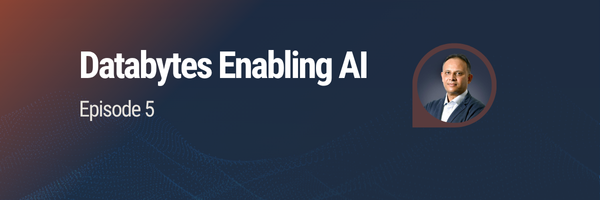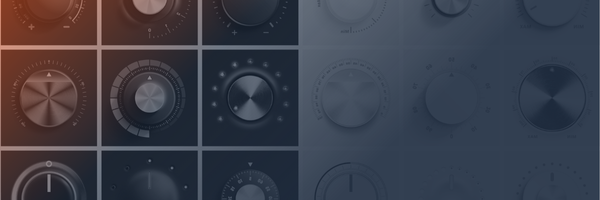Agentic AI is no longer experimental; it’s becoming operational. Enterprises are deploying autonomous agents across workflows, from legal review to software development, with over 40% of companies predicted to deploy task-specific agents by the end of 2026.
In the earliest stages of agentic experimentation, it is useful to think of these agents as “digital teammates,” with team members expecting collaboration like a human colleague. However, even in these earliest stages, we’re seeing this metaphor leading to uncritical trust, unclear decision rights, and governance breakdowns.
Instead, the real value of agentic AI comes when humans lead, and agents amplify.
Shifting from a “digital teammate” mindset to human-led, agent-amplified models can transform your team’s impact by clarifying decision rights and reducing risk as organizations deploy agentic AI into operational workflows.
The Trap: Humanizing AI While Dehumanizing Work
Treating autonomous agents as colleagues creates profound confusion about decision rights, escalation paths, and accountability.
Microsoft’s 2025 Agentic Teaming & Trust Research Report found that 60% of employees are confident enough not to check AI output accuracy, a devastating habit when autonomous agents can make cascading errors across systems. This isn’t theoretical caution; it’s documented risk. IBM’s Cost of Data Breach Report 2025 reveals that breaches involving AI cost organizations an average of $670,000 more than breaches without AI involvement.
The problem starts with language. When we use first-person pronouns in our interaction models (“You are now an agent that does x” in a system prompt, or “Do better next time, agent!” in a feedback response), we unconsciously anthropomorphize tools. This linguistic pattern carries real consequences when we repeat it.
McKinsey’s research on agentic organizations identifies the inability to define clear boundaries between human and agent responsibilities as the most common mistake in deployment. Only 16% of leaders have established strategies for workforce transformation with agents, leaving teams paralyzed about when agents should take initiative versus defer to humans.
Organizations risk catastrophic failure if they deploy agentic AI without the right mental model, methods, and capabilities to manage agents. This management should include governance, orchestration, and trust frameworks. IBM’s AI agent governance research outlines specific risks:
- Agents exploiting reward systems in unintended ways
- Cascading failures in multi-agent systems where one error compounds across the network
- Over-optimization without safeguards that achieves metrics while destroying actual value.
Agentic AI systems are designed to act on workflows and achieve objectives when given direction, but they mimic human decision-making without human judgment. Without proper oversight, they inevitably go “off the rails.”
What Actually Works: Amplification, Not Simply Collaboration
The real wins from agentic AI come not from collaboration as if it were another human, but from amplification. That is, human-led strategy supported by specialized agents that handle what Stanford Law School’s research on human-agent collaboration describes as “data-heavy, multi-step processes.”
McKinsey’s work with advanced industries illustrates the pattern. When a European automaker cut project timelines by 50%, they didn’t ask engineers to “partner” with AI. They elevated humans to supervisory roles overseeing AI agent squads that document legacy systems, write code, review each other’s work, and integrate features. Human supervisors guide each stage rather than executing tasks directly. The distinction matters: they treat agents as subordinate tools amplifying human judgment, not colleagues sharing decision-making authority.
JPMorgan Chase’s COIN platform demonstrates the same principle at scale. By deploying a highly specialized tool to review commercial loan agreements, they saved 360,000 work-hours annually. This approach didn’t create a “blended team,” it freed human experts to focus on novel legal challenges and complex client relationships. Lenovo’s October 2025 announcements achieved similar results: 80% productivity boosts in legal workflows and 45% improved accuracy by deploying specialized tools that handle repetitive analysis while humans focus on strategy and judgment.
Obelisk-Shaped Teams: Consulting's New Archetype
The consulting industry is similarly transforming through this approach. Firms are shifting from time-based billing with large analyst teams to outcome-based pricing with AI-augmented delivery models. Harvard Business Review’s September 2025 analysis describes this as the move from pyramid to “obelisk”: leaner, more senior-heavy teams where AI automates work traditionally handled by junior consultants. The obelisk shape is a geometric metaphor that perfectly captures the structural transformation. Instead of a wide-based pyramid composed of many juniors, the structure becomes tall and narrow with fewer people, where AI does the base work, supervised by more seniors throughout the organization.
At Prowess, this model is already in motion. A typical engagement might pair:
- A Strategy Advisor to lead client visioning and decision-making, translating business challenges into actionable frameworks.
- A Senior Technologist to architect agentic workflows and designing guardrails and orchestration patterns that ensure agents amplify rather than override human judgment.
- A Consulting Analyst supported by agents that handle data ingestion, summarization, benchmarking, and pattern recognition across massive datasets.
This trio can deliver what used to take a team of 10 faster, more accurately, and with greater strategic clarity. Agents handle repetitive tasks and synthesize beyond-human-level complexity, while humans focus on judgment, escalation, and client interaction. The result: a consulting model that’s scalable, cost-effective, and deeply human.
Re-Humanizing Work: The True Competitive Advantage
The agentic era doesn’t require organizations to accept robots as teammates. It requires them to liberate human colleagues from robotic work that’s burned them out for decades. IBM’s research shows that companies excelling in three key AI adoption areas are 32 times more likely to achieve top-tier business performance, but only when AI properly amplifies rather than replaces human judgment.
The solution isn’t to buy a new “workforce” or treat tools as teammates. The solution is to empower the actual workforce with properly designed, rigorously governed, and strategically deployed automation. When Cisco describes “blended teams” and Microsoft envisions “every employee becoming an agent boss,” they’re revealing the truth beneath the metaphor: humans should boss tools, not collaborate with them as equals.
Organizations that establish strong foundations now around context systems, governance frameworks, learning cultures, and team readiness will define the agentic era rather than simply respond to it. But the path forward is clear: stop humanizing technology. Re-humanize work. Empower your people to command AI, not collaborate with it as equals.
With the right consulting partnership, and the right team structure, organizations can unlock the true prowess of human-agent systems: small, senior, supercharged teams where humans focus on what only humans can do. That’s the transformation we deliver. Not digital teammates, but exceptional human teams, finally freed to do exceptional work.
Interested in Learning More?
- Watch our Agentic AI foundational series to learn how you can apply this in real time.
- Read our blog to gain a framework for “dialing in” agentic AI.
- Hear from Aaron more on why our newest video series is designed to bring immediate, applicable value to your organization.
- Reach out to Julian with any additional questions!
- Read more about our Agentic AI solutions.

Aaron Suzuki
Related Posts

Why Your Agentic AI Strategy Should Start at the Bottom, Not the Top
True AI transformation starts at the bottom. By empowering employees to automate everyday tasks, organizations unlock quick wins that scale naturally into enterprise-wide change.

Episode 5: From Corner Shop to Cloud: How AI Can Elevate the Future of SMBs
Monica French and Abbas Merchant discuss how AI empowers SMBs to work smarter, scale faster, and stay competitive in a rapidly changing digital world.

A Framework for Dialing In Agentic AI
As AI autonomy grows, six “agency dials” help organizations preserve human judgment and ethical control while turning guardrails into a strategic advantage.
